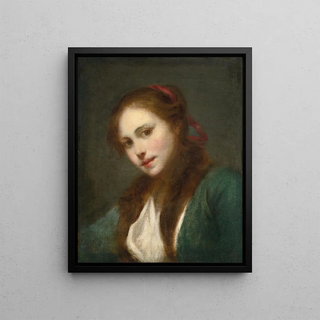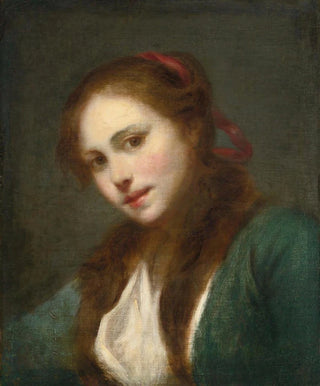Art print | The Polonaise - Jean-Baptiste Greuze


View from behind

Frame (optional)
In the vast panorama of art history, some works manage to capture the very essence of humanity, transcending time and space. "La Polonaise" by Jean-Baptiste Greuze, completed in the 18th century, is undoubtedly one of these iconic creations. It evokes not only aesthetic beauty but also emotional depth that invites the viewer to delve into the intimacy of the characters. Through this piece, Greuze transports us to a universe where human sensitivity is expressed with remarkable delicacy, revealing hidden stories behind each gaze and gesture.
Style and uniqueness of the work
Greuze's style is distinguished by its unique approach to portraiture and visual storytelling. In "La Polonaise," he uses a palette of soft colors and subtle play of light to create an intimate atmosphere. The features of the faces are finely detailed, each expression bearing palpable emotion. The composition of the piece, centered on a female figure with a contemplative gaze, invites deep reflection. This choice of subject, both rooted in everyday life and laden with symbolism, highlights Greuze's ability to blend realism and idealization. The richness of details, from fabrics to accessories, also demonstrates his skill in capturing the fashion and customs of his time, while offering a glimpse into the social and cultural life of the 18th century.
The artist and his influence
Jean-Baptiste Greuze, a major figure of the rococo movement, marked his era with his artistic sensitivity and commitment to universal themes such as love, family, and morality. His work influenced many artists, both contemporaries and followers, advocating for a more emotional and personal approach to portraiture. Greuze was able to rise above the conventions of his time by emphasizing the expression of feelings, thus transforming portraiture into a means of psychological exploration. His ability to capture the human soul through painting paved the way for later artistic movements, notably Romanticism, where subjectivity and introspection play a dominant role.
An exceptional wall decoration signed Artem Legrand

Matte finish

View from behind

Frame (optional)
In the vast panorama of art history, some works manage to capture the very essence of humanity, transcending time and space. "La Polonaise" by Jean-Baptiste Greuze, completed in the 18th century, is undoubtedly one of these iconic creations. It evokes not only aesthetic beauty but also emotional depth that invites the viewer to delve into the intimacy of the characters. Through this piece, Greuze transports us to a universe where human sensitivity is expressed with remarkable delicacy, revealing hidden stories behind each gaze and gesture.
Style and uniqueness of the work
Greuze's style is distinguished by its unique approach to portraiture and visual storytelling. In "La Polonaise," he uses a palette of soft colors and subtle play of light to create an intimate atmosphere. The features of the faces are finely detailed, each expression bearing palpable emotion. The composition of the piece, centered on a female figure with a contemplative gaze, invites deep reflection. This choice of subject, both rooted in everyday life and laden with symbolism, highlights Greuze's ability to blend realism and idealization. The richness of details, from fabrics to accessories, also demonstrates his skill in capturing the fashion and customs of his time, while offering a glimpse into the social and cultural life of the 18th century.
The artist and his influence
Jean-Baptiste Greuze, a major figure of the rococo movement, marked his era with his artistic sensitivity and commitment to universal themes such as love, family, and morality. His work influenced many artists, both contemporaries and followers, advocating for a more emotional and personal approach to portraiture. Greuze was able to rise above the conventions of his time by emphasizing the expression of feelings, thus transforming portraiture into a means of psychological exploration. His ability to capture the human soul through painting paved the way for later artistic movements, notably Romanticism, where subjectivity and introspection play a dominant role.
An exceptional wall decoration signed Artem Legrand






